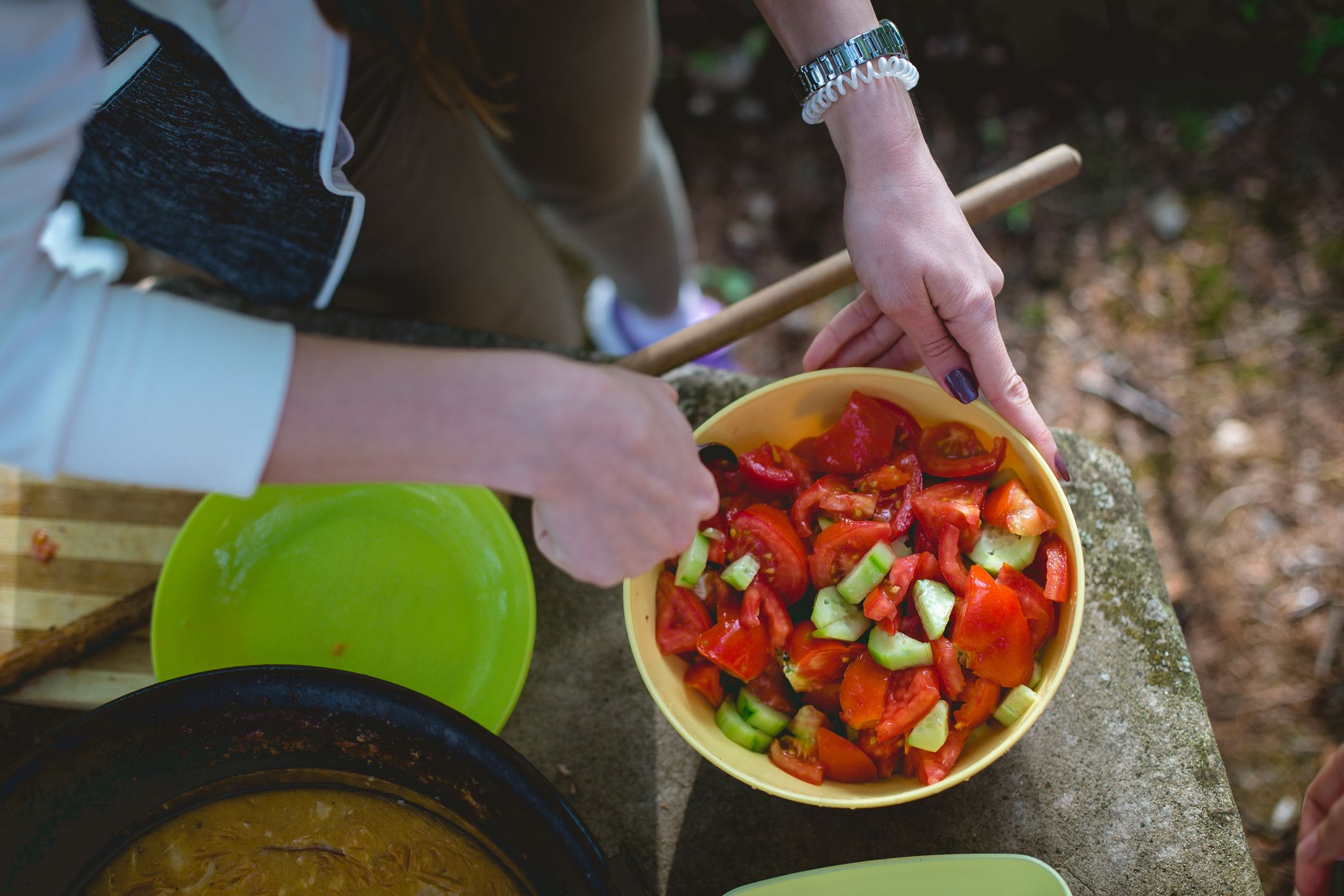Are you getting a little bored with summer salads? Maybe it's time to rethink your salad choices.
A healthy salad is low-calorie, filling and packed with nutrients. But, it can easily become highly caloric, less nutritious or boring, depending on what ingredients you choose.
I've always enjoyed a good salad and am adept at mixing it up to keep things interesting. For a base, I start with lettuce, spinach, arugula or kale. Toppings range from basic cucumbers, tomatoes, carrots and peppers to fruits such as strawberries, pears, kiwis and mangos, often with toasted nuts and homemade vinaigrette.
But as I learn about lettuce's environmental impacts on water and energy use and greenhouse gas emissions, I've felt less need to include lettuce in my salads. Price increases due to last year's droughts in the western growing states also discourage lettuce buying—especially since many of us end up throwing out part of it before we can use it all.
To give lettuce its due, almost all varieties have a high water content to help keep us hydrated and they're good sources of vitamin K and chlorophyll. And many varieties are rich in calcium, manganese, potassium, chromium, folic acid and vitamins, particularly B vitamins.
But a salad doesn't always have to include lettuce—or any greens, for that matter. The dictionary defines salad as "any of various usually cold dishes."
In the Thai food culture, the term "salad" relates to the souring agent used to dress the dish—usually lime juice. Thai salads may have cold herbs, vegetables and noodles, mixed with a warm protein such as chicken, pork, beef, seafood or tofu.
Many of us in the South grew up eating cucumber salad, which was nothing more than sliced cucumbers doused in apple cider vinegar and salt and pepper and served cold. Some people add sugar or sliced onion. Any way you make it, it's simple and refreshing.
My summer favorite is what some people call a "plate salad" because it can be spread on a plate, rather than heaped in a bowl. My version includes chopped tomatoes and cucumbers with crumbled blue cheese, seasonings and a drizzle of olive oil and balsamic vinegar. It's been my go-to lunch all summer, often with tomatoes and herbs from my garden.
It reminds me of authentic Greek salads, which some Americans may be surprised to learn don't include lettuce—just tomatoes, cucumbers, red onions, peppers, Kalamata olives, feta cheese, olive oil and oregano. The Italian favorite, caprese salad, features tomatoes, basil and mozzarella cheese.
These tomato-based salads are great if you can get flavorful, fresh tomatoes, but if you don't live in a year-round farming area, you may be better switching to other types of salad in fall and winter, like kale or spinach salads, both of which may include fruits that are widely available in cool seasons, such as pears, apples and oranges.
Here are some additional recommendations from ChooseMyPlate.gov, a service of the U.S. Department of Agriculture:
- Mix up the greens. In addition to kale and spinach, experiment with leafy green lettuces like watercress, arugula, mâche or mizuna. You may find you like these spicier lettuces. And some are rich in calcium, omega-3 fatty acids and a variety of vitamins, so it's good to mix them up. You can buy ready-to-eat bagged mixes, such as mesclun (spring mix) at the grocery store or create your own.
- Vary your veggies. Veggies like asparagus, artichoke hearts, beats, broccoli, cauliflower, string beans, peas, peppers and even zucchini can add nutritional punch and fiber to your salads. Rather than slicing them all, try grating or dicing for different textures. This shredded carrot salad with dried fruit mixes textures and flavors.
- Feeling fruity? If fresh veggies aren't readily available, fruit can be a good winter stand-in. Try sliced pears, kiwi, apples, mango, papaya or orange sections (canned mandarin orange segments work well in a pinch). Avocados are also technically a fruit and make nearly any salad better. Try these stuffed avocados for a delicious, nutritious lunch salad. Fruit salads don't require greens. Fan slices of apple or pear on a small plate, top with shavings of parmesan or other sharp cheese, sprinkle with roasted nuts, and drizzle with a balsamic vinaigrette. Voila! Perfect fall salad.
- Bulk up with beans. Turn a salad into a meal by adding half a cup of beans. Almost any kind works—kidney beans, white beans, black beans, garbanzo beans and lentils. Take your pick. If using canned beans, be sure to rinse them first to get rid of excess salt. Beans will boost the fiber, protein and "staying power" of your salad.
- Pick up the protein.If you want even more protein, add some water-packed tuna, chopped hard-boiled egg, diced chicken, boiled shrimp or, in a pinch, sliced turkey lunchmeat.
- Go with the grains.Adding grains to a salad will increase your calories, so you may want to add them as an extra, rather than a base.But whole grains like farro, brown rice, barley and bulgur can add protein, fiber and flavor to your salads. You may also want to try the nutrient-rich pseudocereal quinoa in this California Fiesta Quinoa Salad.
- Dress it right.Most bottled dressings are loaded with sugar, salt, fats and preservatives. It's so easy to make your own. With plated salads, just drizzle a little olive oil and vinegar over them. If you want more, mix about 2/3 oil to 1/3 vinegar and season as desired with salt, pepper and other flavors. Mustard and lemon both add zing, while a touch of brown sugar or honey brings out the sweetness of fruit.


